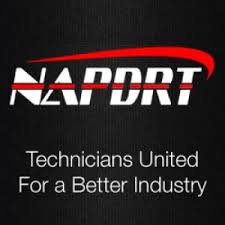
A Learned Skill
How To Mix Custom Interior Colors From Scratch…
By Doug Snow and Kian Amirkhizi
It’s 6:00 a.m. The morning sun pierces a tree-lined fairway raining dots of light in front of a slender18-year-old golfer. The sprinklers leave the acrid smell of Los Angeles’ reclaimed water hanging in the air. A small drop of sweat races down the golfer’s cheek as his body remains heated from a warm-up drill minutes earlier.
He rifles through his golf bag and grabs “the big dog.” He practice swings the 320CC titanium head through the air at over 120 mph, listening to the distinctive bullet-cutting-air sound it makes, while simultaneously making a tiny adjustment in his swing. Now, it’s his turn to hit.
He places a small dimpled ball atop a tiny wooden pole and thoughtfully positions himself in front of it. With care and Zen-like concentration, he pulls the club back in a perfect imaginary arc, momentarily pausing at the top. Then, recruiting over 200 muscles in less than three-tenths of a second and with enough force to snap his spine in half, he unwinds his torso in a graceful display of athletic prowess. The swing is “pure.” The ball takes flight like a laser-guided missile as he suspends breathing awaiting the final landing destination. The ball rests an amazing 310 yards from the tee box, giving him a sweet layup to the green—it doesn’t get any better than that!
Not too many of us can do that. Golf is a learned skill. If you have ever played the game, then you know that without hours of practice and training it can be extremely frustrating. But if you are my son with a +2 handicap, the future looks bright.
But he didn’t just wake up with that talent—he worked at it. A lot of hours just practicing and practicing, adjusting and taking lessons, driving here and there to different golf courses and tournaments.
If you think about it, learning to mix colors-by-eye is no different. It, too, is a learned skill, requiring practice and training, but it’s a heck of a lot easier than learning golf!
Interior restoration squarely rests half of its skillset on the ability of a technician to properly mix custom colors. Whether doing repair or re-dye work, the learned talent of custom color mixing is a much-appreciated and needed aptitude.
If you are thinking of adding interior restoration to your offerings—or you already perform this service—it’s highly recommended that you invest the time to learn the talent of mixing colors, rather than always being beholden to alternatives.
What are the alternatives to mixing by eye, and what are their limitations? There are many who have skirted the seemingly laborious process of mixing colors by eye using various other work-a-rounds. Let’s take a look at some:
- Formula Books
- Spray-Cans
- Pre-mixed colors
- Computer aided Spectrophotometers
Formula Books: These are reference libraries of colors that contain the formulas for the colors, and they work very well in some applications. They are generally a great starting place when the technician needs to save time just to get close, then adjusting the final mix by eye (still requiring color-mixing skills).
But carrying a pre-matched color for every conceivable car, truck or boat is going to be challenging to say the least, and the formula books are specific to the “dye line” that publishes them.
However some sample formula books may carry a large library of “Pantone” colors, giving you a large array. You can match the color that you are trying to mix with a sample in the library. Other formula books contain the formulations to major automobile manufacturers. These formulas, however, will not account for the difference in color caused by exposure to sunlight, chemicals or variances in dye-lots.
Spray Cans: Many coating companies have committed to carrying a comprehensive line of colors in convenient spray cans. Carrying a general selection of the most popular colors is a great way to save time and money by avoiding the hassle of always mixing colors by eye. Many techs or detail shops carry specific lines, such as Ford or GM. Doing minor touchups or “freshening up” the interior is quick and profitable business for many detail shops without a large investment of time and capital.
However, it’s impossible to carry all the colors for all the cars, boats or airplanes that you will encounter. Additionally, spray cans are limited in their application. Because aerosols use a propellant, which is mixed in with the color, the strength of the coating is diminished. Also, the base that the color is mixed with is not always the best for the particular type of substrate that you will be working with. For example, most aerosols are solvent based, which isn’t good for using on leather. Aerosols that are made with a water base have a very short shelf life.
Pre-mixed Colors: Another great time-saving solution is where you purchase a large selection of colors that are already pre-mixed into the coating of your choice. They are usually purchased in 4-ounce, 8-ounce, 16-ounce or quart sized containers.
The smaller containers are generally preferable for those who operate a mobile-based business, since space is usually at a premium. But there are several drawbacks.
There are hundreds and hundreds of colors, so storage and having to purchase so many colors is an issue. You still need to know how to make colors in case you have to make a custom color or have to match faded colors. Also, the shelf life is a consideration.
Spectrophotometers are the best answer to an effective, all-encompassing solution to color matching. While available in many styles, from portable devices to desktop models, they require a hefty investment.
Spectrophotometers: Spectros are the best answer for those who need an effective all-encompassing solution to color matching. This equipment is similar to the type of machines used at Home Depot or other hardware stores. Though they come in many styles, from small portable devices to larger fixed desktop models, they are generally tethered to a computer that interprets the data sent by the sensors in the spectro.
Spectros see better than the human eye, as they are able to distinguish colors in multiple light sources and detect minor variation in colors. This is quite helpful when trying to work inside a vehicle where mixing a color may be problematic. Spilling little drops of red, yellow and blue on someone’s new carpet is not the best way to get referrals.
However, these units are expensive; complete systems cost as much as $7,000 and go up from there—and they can’t do everything. There are times when the computer just cannot “hit” the color, requiring skilled intervention from the operator. And if you depend on the computer to do all the heavy lifting, you will be in sad shape if the unit breaks down.
But of all the available options, if a technician or detail shop can afford it, this is your best choice
With all the gadgets and work-around solutions, many techs have escaped the challenging task of learning how to mix a color by eye. But, it’s really not that hard to learn—it’s a lot easier to than hitting a golf ball 300 yards.
The Basics
First, there are only three colors. Red, yellow and blue. So, if you ever experience frustration when mixing a color, always remember that there are only three primary colors in total. How hard could it be? You cannot mix a “pure red;” this is a starting point. It’s the same with the two remaining primary colors—they are starting points for all colors.
Now let’s mix primary colors to create “secondary” colors. For instance, what color is created when we mix yellow and blue? You’re right—it’s green! So let’s examine all the secondary color combinations.
Red Blue Red
>Purple >Green >Orange
Blue Yellow Yellow
A color wheel is an extremely simple and effective tool in illustrating the above mixes, as it is set up geometrically to determine color combinations. Locate the three primary colors on the color wheel. Now pick two colors—say, yellow and red. In between those two colors would be the resultant color combination of orange. The same is true with combining the other two primary color combinations.
The color wheel is a necessary four dollar investment for beginning colorists. Now what happens if you combine secondary colors together? You get a brown or gray color. Whenever you mix all three primary colors together you will “gray” or “brown” the color.
Wait—what about white and black?
Instead of thinking about white and black as colors, think of how they influence the lightness or darkness of a color, which we refer to as “value”. There is a value scale or “grey scale” on the inside portion of the color wheel. It is a scale of 1 to 10. It is the way the lightness or darkness of a color is measured.
To illustrate, imagine a light yellow color in your mind. Now look at the color wheel. The yellow on the color wheel is a “pure yellow.” That is the starting point. So how do we get to the light yellow? You guessed it—just add white. See, this is easy!
We all know that you cannot learn golf by reading an article, and we sure as heck can’t teach how to mix colors either in the same fashion. The fact is, both are learned skills requiring a teacher.
Now, some have learned golf without lessons. But those who do often end up with bad advice from other golfers. Or they end up with a lifetime of shortcuts and work-arounds. If they just spent the requisite time learning from a skilled teacher, they would save so much frustration.
The same goes with color mixing. If you are interested in learning how to mix colors, you need to get with a qualified instructor who can guide you through the process with the proper knowledge and training.
After all the years in this industry, nothing impresses a customer more than seeing the mad science of a skilled technician mixing colors by eye. The symphonic blending of colors to achieve the “perfect color match” is magic to behold. It’s fun, learnable and well worth the time to achieve an exceptional talent—the learned skill of mixing a color from scratch.









